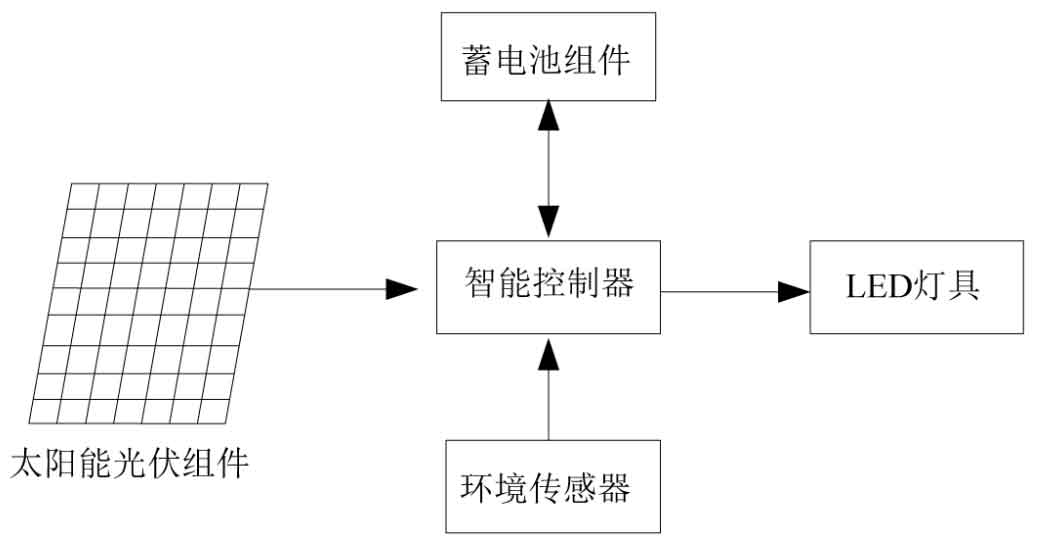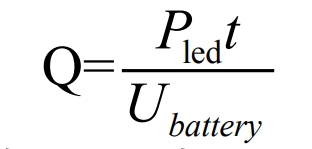Road lighting is an important component of urbanization construction. At present, the annual electricity consumption of road lighting in China accounts for about 4% to 5% of the total power generation in the country, exceeding the annual power generation of the Three Gorges Hydropower Station. In response to the problems of low lighting efficiency and high power consumption in traditional road lighting, vigorously developing and utilizing new energy, with the aim of practical application, to achieve green, energy-saving and environmentally friendly road lighting is the future development trend. Solar energy is a clean and renewable energy source. With the development of solar photovoltaic power generation technology and energy-saving LED lighting technology, solar LED street lights have been applied in road lighting. Solar LED street lights have the characteristics of independent operation, no need to lay cables during installation, only one-time investment, no need to pay electricity bills in the future, and low maintenance costs. For areas with abundant sunlight and difficult power supply, solar LED street lights will gradually be promoted.
1. Solar LED street light system
The solar LED street light system mainly consists of solar photovoltaic modules, battery modules, intelligent controllers, LED lighting fixtures, and environmental sensors (see Figure 1). The working principle is under the control of an intelligent controller, which converts solar energy into electricity through solar photovoltaic modules during the day and stores it in a battery. At night, the battery discharges LED lights to achieve road lighting.

2. Design of Solar LED Street Light System
The design process of solar LED street light systems should be tailored to local conditions, fully considering safety, reliability, and economy. Based on local geographical environment and meteorological data, scientific calculations should be made, and relevant equipment should be selected reasonably.
2.1 LED lighting fixtures
Compared with traditional light sources, LED has advantages such as DC low-voltage driving, high luminous efficiency, low power consumption, long service life, and easy dimming, color adjustment, and temperature adjustment. Therefore, LED is recommended for use in solar street light design.
LED lighting fixtures should choose high luminous efficiency LED light sources, with a total luminous flux of:

In the formula: Pled is the power of the LED lamp, W; L is the luminous efficiency of the LED light source, lm/W.
The average illuminance of road surfaces is generally calculated based on standard straight sections using the utilization coefficient curve method. The calculation formula is:

In the formula: η LED is the utilization coefficient of the lamp, which is searched from the lamp utilization coefficient curve based on the installation arm length, height, elevation angle, and road width of the lamp; K is the maintenance coefficient; W is the width of the road, m; S is the installation spacing of street lights, m; N is related to the arrangement of street lights. When the street lights are arranged on one side or staggered, N=1, and when they are arranged on opposite sides, N=2.
The evaluation of road lighting energy efficiency should use Lighting Power Density (LPD), and its limit value should comply with relevant regulations. The calculation formula for lighting power density is:

2.2 Battery components
The capacity and working voltage of the battery should match the power and lighting time requirements of solar photovoltaic modules, LED lamps, etc. The working voltage of a general battery should be 20% to 30% lower than the working voltage of a solar photovoltaic module to ensure normal charging of the battery; The battery capacity should be more than 6 times higher than the daily power consumption of LED lamps to ensure the reliability of operation. The calculation formula for daily power consumption of LED lamps is:

In the formula: t is the daily working time of LED lamps, h; Ubattery is the nominal voltage of the battery, V.
The calculation formula for battery capacity is:

In the formula: d represents the number of consecutive rainy days, d; μ The discharge depth of the battery is generally taken as 0.75; σ The safety factor of the battery is generally ranging from 1.1 to 1.4. Based on the calculated battery capacity, select an appropriate number of fully sealed and maintenance free colloidal batteries to form the battery components.
2.3 Solar photovoltaic modules
The core of solar photovoltaic modules is solar cells. At present, solar cells are mainly divided into three types: monocrystalline silicon solar cells, polycrystalline silicon thin film solar cells, and amorphous silicon thin film solar cells. The comparison of the three is shown in Table 1. The type selection of solar panels should be based on the geographical environment and climate data of the intended installation area.
| Solar cell type | Photoelectric conversion efficiency | Production process | Price | Performance | Service life/year | Applicable place |
| Monocrystalline silicon solar cells | 15% to 24.7% | complex | highly | stable | about 25% | cloudy and rainy days with relatively insufficient sunlight |
| Polycrystalline silicon thin film solar cells | 10%~18% | relatively simple | relatively low | relatively stable | about 20% | sufficient sunlight |
| Amorphous silicon thin film solar cells | 10%~13.4% | simple | low | not stable enough | conversion efficiency decays about 10% | insufficient sunlight |
The power of the solar panel should meet the daily electricity consumption of LED lamps and the capacity that the battery needs to recover after continuous cloudy and rainy days. Among them, the charging current of solar photovoltaic modules that meet the daily electricity consumption of LED lamps is:

In the formula: λ The comprehensive loss coefficient for solar charging is generally taken as 1.05; η Battery is the charging efficiency of the battery, generally taken as 0.85; η Control is the correction coefficient for controller efficiency, dust obstruction, and other losses, generally taken as 0.9.
The charging current of solar photovoltaic modules that need to restore battery capacity after continuous cloudy and rainy days is:

In the formula: D is the interval time between two consecutive rainy days, d.
The power of solar photovoltaic modules is:

In the formula: Usolar is the working voltage of the solar cell module, V.
Select an appropriate number of solar modules with standard specifications based on the calculated Psolar. The power generation efficiency of solar panels is closely related to the installation tilt angle of solar panels. To ensure the efficiency of solar panel power generation, in the design of solar LED street light systems, the tilt angle of the solar panel should be determined based on the latitude of the installation position, so as to maximize and evenly distribute the solar radiation, thereby minimizing the investment cost of the solar panel. The relationship between the installation inclination angle and latitude of general solar panels can be designed according to Table 2.
| latitude | 0 ° -25 ° | 26 ° -40 ° | 41 ° -55 ° | > 55 ° |
| Inclination angle | Local latitude | Local latitude plus 5 ° -10 ° | Local latitude plus 10 ° -15 ° | Local latitude plus 15 ° -20 ° |
2.4 Intelligent controller
The main function of the solar LED street light controller is to achieve intelligent control of the lighting process and smooth dimming and color temperature adjustment, and to have protective functions such as overcharging, over discharging, anti short circuit, anti reverse connection, and lightning protection. In areas with large temperature differences, intelligent controllers should also have temperature compensation functions.
2.5 Lightning protection grounding
The working voltage of solar LED street lights is generally 12V or 24V, which is a safe voltage and does not require electrical protection grounding. But in order to ensure the safe operation of solar LED street lights, lightning protection and grounding design should be carried out. Lightning protection grounding can be achieved by using metal lamp poles as both lightning arresters and down conductors, and using street lamp foundation steel bars as grounding bodies. The grounding resistance should not exceed 10 Ω. If the grounding resistance does not meet the requirements, an artificial grounding electrode should be added. In special areas, wind resistant devices should also be considered for adverse weather conditions such as strong winds to avoid unexpected weather affecting the operational quality of solar LED street lights.
3. Engineering Applications
At present, the application of solar street lights in urban roads is mainly focused on local demonstrations and small-scale pilot projects, with more applications in residential areas and factories. The internal roads of a resettlement area in Chongqing were not considered for lighting during the initial development stage. With the development of urban and rural areas, in order to meet the lighting needs of the internal roads in the resettlement area, a comparison was made between traditional street lighting and solar LED street lighting schemes using the design calculation method in this article, as shown in Table 3. From the table, it can be seen that the total investment cost of solar LED street lights is about 421000 yuan less than that of traditional street lights, and it also avoids
| Street light type | Light source type | Street lamp cost (unit price/10000 yuan) | Street lamp cost (quantity/set) | Street light expenses (total) | Installation project cost/10000 yuan | Operating cost/(10000 yuan/a) | Maintenance cost/(10000 yuan/a) | Total/10000 yuan (calculated based on a service life of 5a) |
| Traditional streetlights | High pressure sodium lamp 90W | 0.7 | 32 | 22.4 | 100 | 0.6 | 0.5 | 127.9 |
| Solar LED street lights | LED 30W | 1.4 | 32 | 44.8 | 40 | 0 | 0.2 | 85.8 |
Avoiding the impact of construction processes such as laying wires on regional living. At present, the solar LED street lights in the resettlement area are operating well and can meet the requirements of internal road lighting.
4. Conclusion
Solar LED street lights combine solar photovoltaic power generation technology with energy-saving LED lighting technology. With the improvement of solar cell efficiency and the decrease in cost, solar LED street lights will increasingly meet lighting needs in the future. Through practical engineering design verification, the calculation process in this article can efficiently, scientifically, and reasonably meet the design requirements of solar LED street lights.
